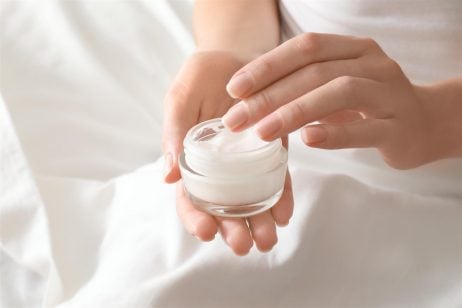Everybody knows that food can go bad. Leave a loaf of bread on the counter for too long and it will sprout fuzzy green or white mold. We all have bits of fruit and veg that have gone soft and brown in the back of the fridge. But food isn’t the only thing with a shelf life. Skincare and makeup have it too, which is wfhy they often contain preservatives. CosmeticsInfo.org explains it this way. “Without preservatives, cosmetic products, just like food, can become contaminated, leading to product spoilage and possibly irritation or infections. Microbial contamination of products, especially those used around the eyes and on the skin, can cause significant problems. Preservatives help prevent such problems.”
Some preservatives are well known, while others such as parabens are considered controversial. Many people seek out natural or preservative free makeup to try and avoid them all together. But are all preservatives created equally, and are there any to steer clear of?
Why Can Skincare Products Go Bad?
Makeup and skincare can – and does- go bad for a variety of reasons. According to the US Food and Drug Administration (FDA), skincare products can degrade over time if they need to be scooped out with fingers, which introduces microorganisms as well as moisture, thereby making it easier for bacteria and fungi (yeast) to grow. The FDA notes that temperature changes and exposure to sunlight and air can cause products to smell, and change their color and texture.
So why are skincare products susceptible to breaking down? For one, they tend to be water based. According to a 2018 paper by Noureddine Halla, Isabel P. Fernandes and Maria Filomena Barreiro published in the National Center for Biotechnology Information (NCBI), “Water is an ideal growth factor for microorganisms… Cosmetics, like any product containing water and organic/inorganic compounds, require preservation against microbial contamination to guarantee consumer’s safety and to increase their Shelf-life.”
The authors noted in their article that all cosmetic products require protection against bacteria. “Generally speaking, all products, including cosmetics, containing water and organic/inorganic compounds under appropriate physicochemical conditions, are exposed to microbial contamination. This justifies why these products require effective and adequate protection against microorganism proliferation.”
How Do Skincare Products Get Contaminated?
Products can get contaminated while they are being used, during the manufacturing process, or due to exposure to light and air. The NCBI paper notes that products may contain several types of bacteria. “Studies have shown that the mostly frequent microorganisms found in cosmetics comprise Pseudomonas aeruginosa, Klebsiella oxytoca, Burkholderia cepacia, Staphylococcus aureus, Escherichia coli, Candida albicans, Enterobacter gergoviae, and Serratia marcescens, but also other bacteria, fungi and yeasts.”
The design of the product- for example, whether it is in a sealed or in an open container– can play a role in potential contamination. Products that come with applicators, such as mascara wands, are exposed to bacteria and fungi every time they are used. As the FDA states on its website, products can become contaminated through finger contact, especially open top jars that come in contact with fingers.
Are Certain Kinds of Skincare Products More Susceptible to Bacteria?
Yes. According to the same paper in the NCBI, “water-in-oil (W/O) emulsions can minimize the risk of microbial contamination more than oil-in-water (O/W) emulsions. The size of the emulsions droplets can improve the cosmetics effectiveness.”
The pH balance, or acidity of a product, is also a factor. “The optimum pH for microorganism’s growth in cosmetic products is between 5 to 8, meaning that any pH outside this range induces unfavourable conditions, thus decreasing their growth rate,” according to the paper in the NCBI. Put another way, an acidic product such as an alpha hydroxy peel or serum isn’t an ideal environment for bacteria growth.
What Kinds of Preservatives Are Used in Skincare?
Preservatives used in skincare fall under three categories- natural, synthetic and chemical. Natural preservatives include honey, and thyme, oregano, and tea tree oils, which all have antibacterial properties. However, these preservatives may not be as effective as other types. Synthetic preservatives include tocopheryl acetate, a man made version of vitamin E, and food grade sodium benzoate. Other preservatives come from alcohol, such as ethanol, grape alcohol, benzyl alcohol and witch hazel. Chemical preservatives include parabens as well as formaldehyde, which is found in some shampoos.
A 2018 article in Chemical & Engineering News notes that traditional preservative suppliers are turning to food-grade preservatives as an alternative to synthetic ones. In the article, Edward Gotch, CEO of Emerald Kalama Chemical, a maker of benzoates—including benzoic acid, sodium benzoate, and benzyl alcohol—says the number of personal care products launched containing benzoates is increasing by 7% annually. The same article mentioned that the food preservative cetylpyridinium chloride (CPC), which prevents bacteria growth in meat and poultry processing plants, is expanding its presence in personal care. This antiseptic is found in many mouthwash brands.
Have There Been Any Major Issues With Bacterial Outbreaks in Skincare Products?
Yes. According to The New York Times, bacteria-contaminated facial lotions caused a small outbreak of blindness in the 1950s, which then lead to the use of parabens in cosmetics. Cosmetic and skincare recalls do occur. In 2019 Health Canada issued a recall for Herbivore Botanicals Pink Cloud Moisture Cream due to the possible presence of mold. In 2017 a lot of Beautycounter’s Nourishing Day Cream contained the bacteria Pluralibacter gergoviae, and the company issued a voluntary recall. In 2018 the US FDA, along with the Centers for Disease Control and Prevention (CDC) investigated a multistate outbreak of B. cepacia infections linked to Medline Remedy Essentials No-Rinse Cleansing Foam, which was recalled.
Why Are Parabens Controversial?
According to the US FDA, the parabens used most commonly in cosmetics are methylparaben, propylparaben, butylparaben, and ethylparaben. They are often used in conjunction with other preservatives. The American Chemical Society estimates that parabens are present in about 85% of personal care products. As with other preservatives, they help prevent the growth of bacteria and mold, and are found in moisturizers, makeup and shampoos.
Parabens are controversial because they can mimic estrogen in the body. According to the Breast Cancer Prevention Partners, parabens are endocrine disruptors. As the group explains, “studies have shown that parabens can affect the mechanisms of normal breast cells and potentially influence their abnormal growth, leading to increased risk for breast cancer.” The Campaign for Safe Cosmetics (CSC) reports that parabens have also been linked to reproductive, immunological, neurological and skin irritation problems.
In a 2017 article published in McGill University’s Office for Science and Society, author Joe Schwarcz PhD, notes that public mistrust of preservatives can be traced back to a 2004 paper by Dr. Philippa Darbre of the University of Reading. She found parabens in cancerous breast tumors, leading people to question whether parabens contributed to cancer. But critics pointed out that non-cancerous breast tissue was not examined for the study to see if it also had traces of parabens. As BreastCancer.org states, “Parabens have been found in breast tissue and breast cancers, but this really doesn’t mean much. Parabens have been found in many other tissues because of their wide Use.”
Dr. Schwarcz wrote in his piece “What she failed to mention was that the estrogenic activity of the various parabens is thousands of times less than that of estrogenic substances found in foods such as soybeans, flax, alfalfa and chickpeas, or indeed of the estrogen produced naturally in the body.”
Nevertheless, consumers became alarmed at the use of parabens. Companies took on board customer feedback and stopped using parabens in their products. Since then, other countries have limited the amount of parabens used in cosmetics. In 2014, the EU banned five types of parabens, citing possible risks to human health—-especially in products designed for children.
The US FDA notes that “FDA scientists continue to review published studies on the safety of parabens. At this time, we do not have information showing that parabens as they are used in cosmetics have an effect on human health.”
What About Formaldehyde?
Formaldehyde is found in items ranging from plywood to permanent press fabrics and fiberboard, according to the American Cancer Society (ACS). It is “sometimes used in low concentrations in cosmetics and other personal care products like lotions, shampoo, conditioner, shower gel, and some fingernail polishes. These may raise the concentration of formaldehyde in the air inside the room for a short time, but the levels reached are far below what is considered to be hazardous.”
The ACS notes that “exposure to formaldehyde has been shown to cause cancer in laboratory test animals. Exposure to relatively high amounts of formaldehyde in medical and occupational settings has been linked to some types of cancer in humans, but the effect of exposure to small amounts is less clear.” According to SafeCosmetics.org, formaldehyde is banned from use in cosmetics and toiletries in Japan and Sweden; in the EU, restricted in personal care products, and labeling is required in products that do contain these chemicals.
According to WebMD, it may be difficult to try and avoid formaldehyde completely. “A recent study commissioned by the Campaign for Safe Cosmetics in conjunction with the Environmental Working Group, found formaldehyde in baby lotion, baby bubble bath, and baby shampoo. The chemical was not an intentional ingredient but was a byproduct of the manufacturing process.”
How Do You Know When a Product Goes Bad?
Not all skincare and beauty products come with expiration dates, which makes it hard to determine when a product has gone bad. Some have a PAO symbol (Period After Opening) symbol such as 12M which means the product should be thrown away 12 months after opening.
A general rule of thumb is that most products last about one year although organic products and/or items that do not contain preservatives have a much shorter shelf life. Other factors that can affect the longevity of a product include the ingredients, how it is packaged (an open jar versus a sealed tube) and where it is stored. A hot, humid environment, such as a bathroom or a car, is not ideal.
Mold in skincare doesn’t always show up as green or black fuzz; sometimes the mold can blend in with the color of the product. If the product smells odd, or has a different consistency than when you first bought it, it could be time to toss it. Some people store their skincare and beauty products in the refrigerator as an added level of protection although some beauty companies advise against this, depending on the product’s formula.
What Happens if You Use an Expired Product?
Cosmetic chemist Mort Westman told Oprah magazine in 2015 that “expired products may not only lack potency, but could also cause an adverse skin reaction. If you’re unsure how old something is, the general rule is to toss anything that has significantly changed in color or odor, or separated, clumped, thickened or thinned.”
Do Preservative Free Skincare Products Exist?
Yes. Some skincare products are sold as “preservative free.” Lush sells some “self-preserving” products, and the company says this means “they are preserved using natural ingredients and clever formulation.” Some preservative free products are available from June Jacobs, Replenix and Avène as well as some face oils from Sunday Riley and Skyn Iceland.
Sources: US Food and Drug Administration (FDA), National Center for Biotechnology Information (NCBI), Chemical & Engineering News, The New York Times, McGill University’s Office for Science and Society, American Cancer Society, SafeCosmetics.org, WebMD.







